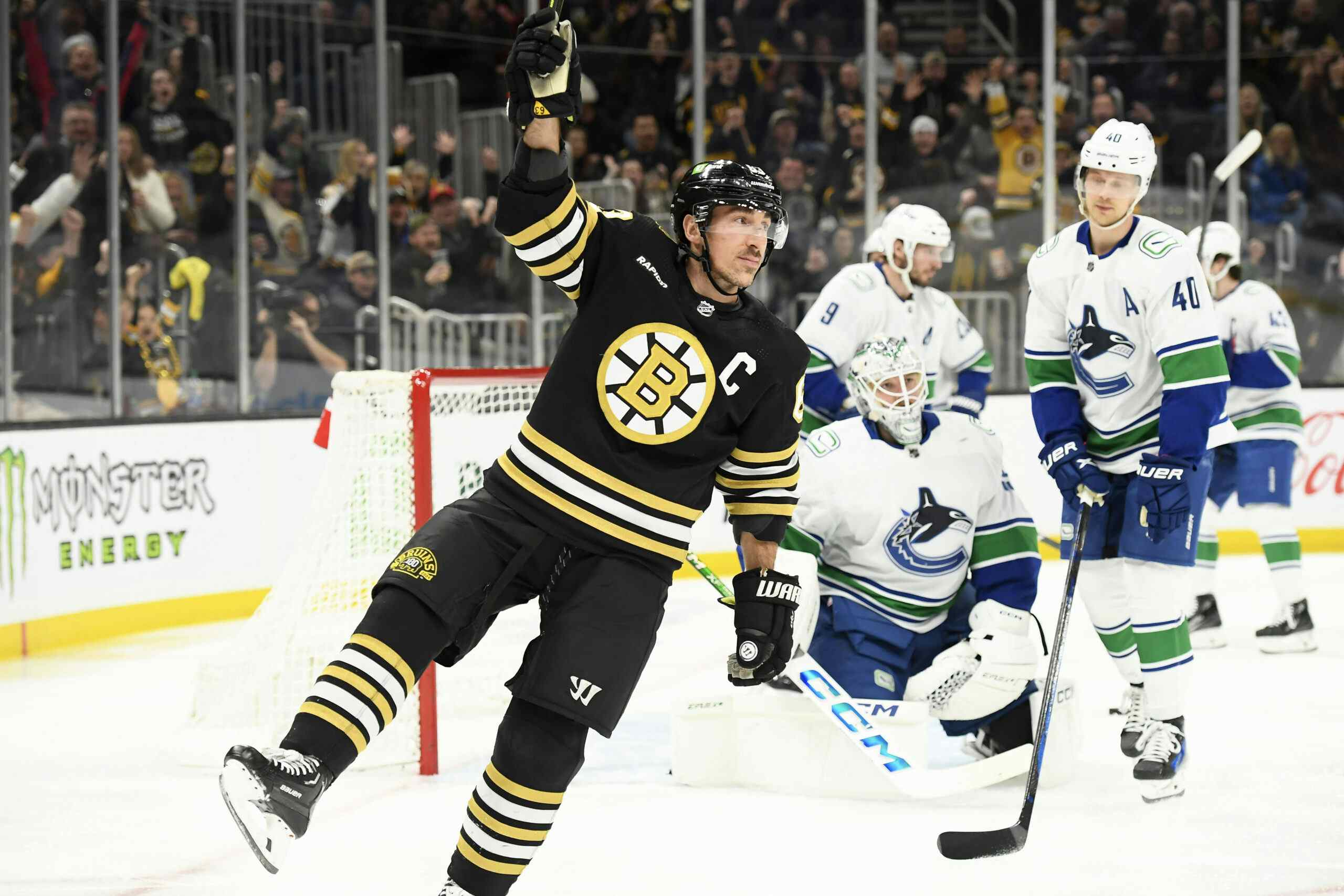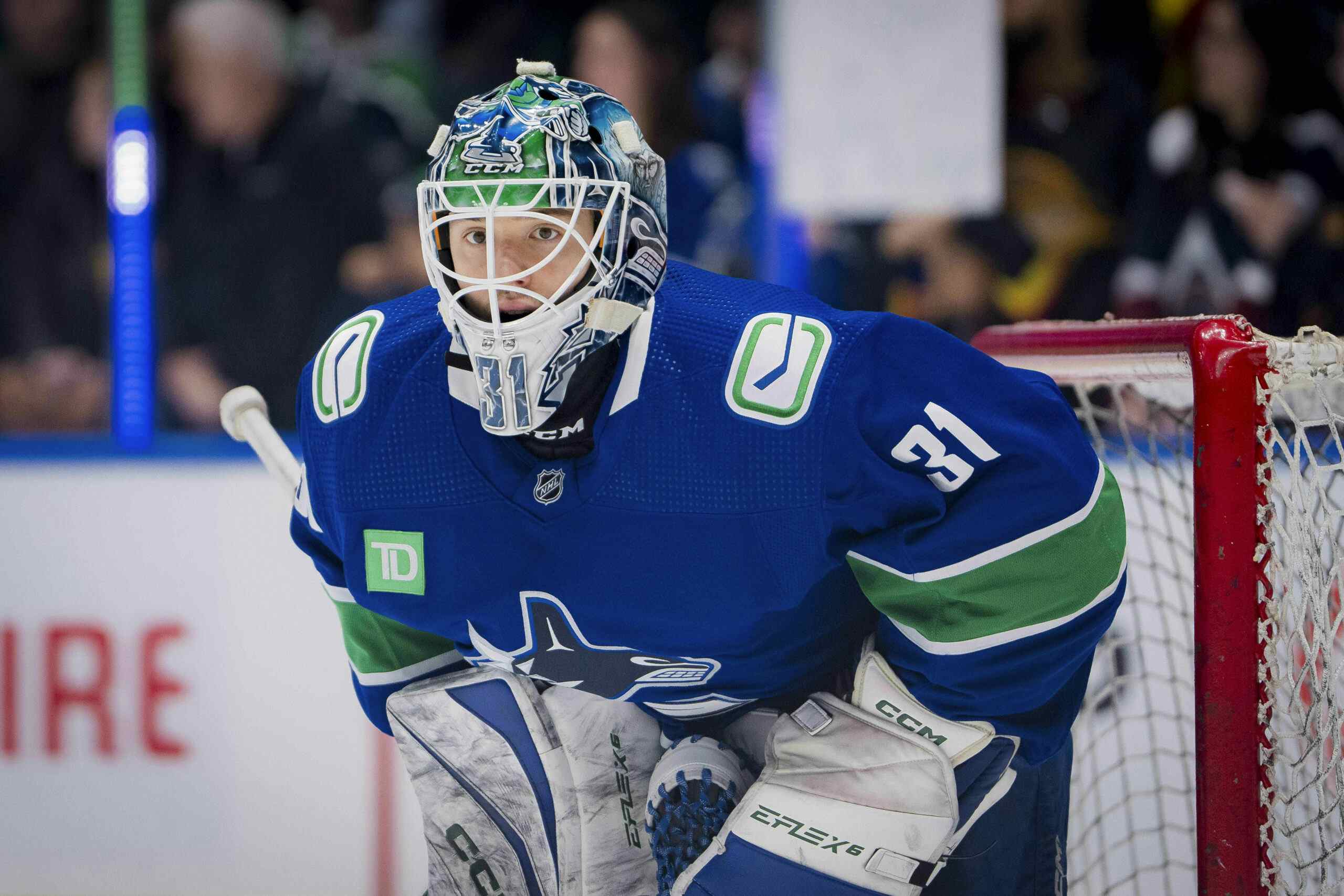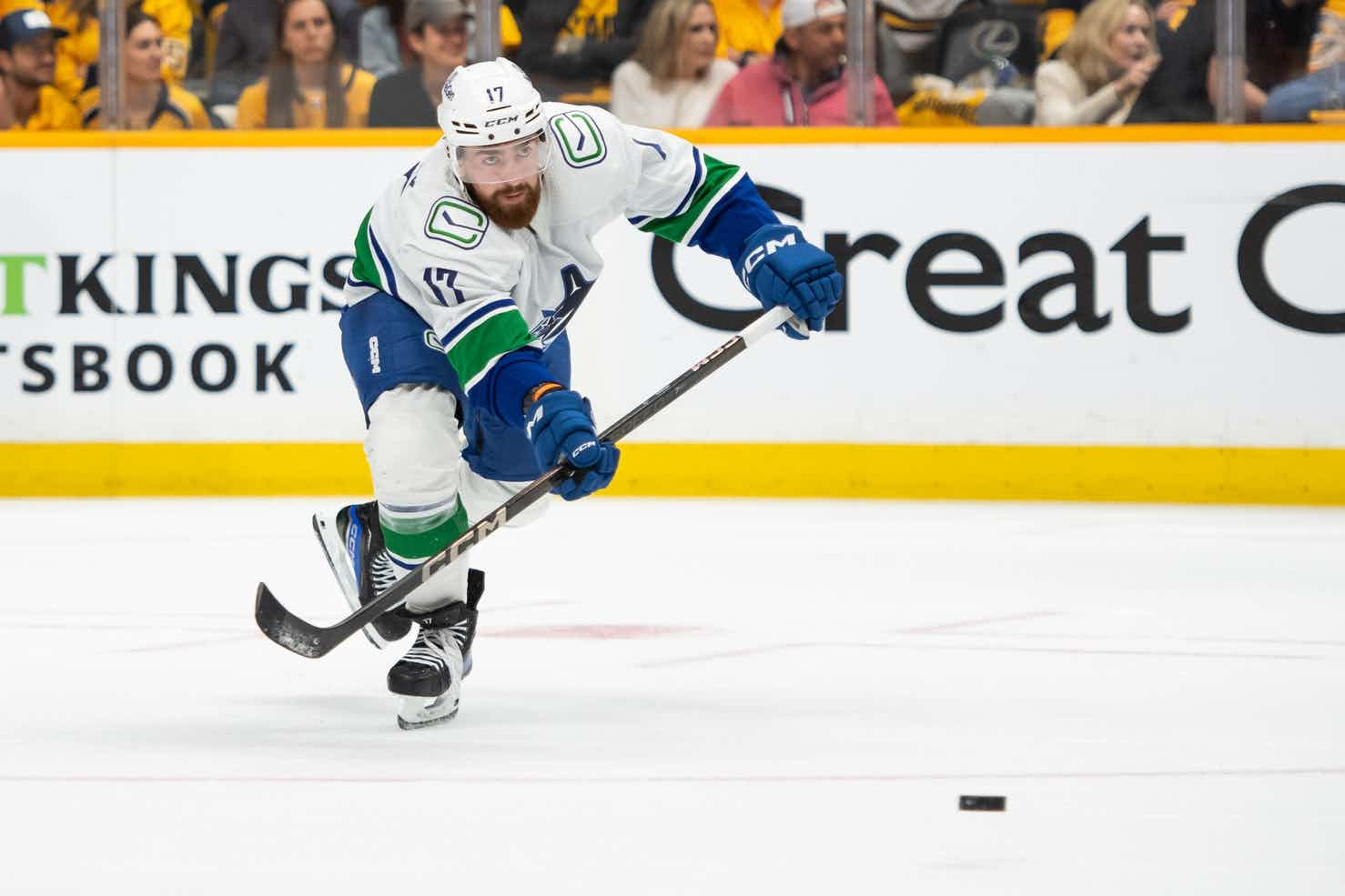Three Prospects the Canucks Should Target at the 2015 Entry Draft
By Rhys Jessop
8 years agoYesterday, we began our offseason draft coverage by highlighting three players the Vancouver Canucks would be smart to avoid taking 23rd overall at the upcoming NHL entry draft. Long story short, while all three guys had legitimate upside and lots of things to like about each, there were too many concerns around them to justify drafting 23rd overall.
The best argument in favour of passing on this group has little to do with those individual players, however. When you’re drafting, you want to derive more future value from your draft pick than anyone else can from any player taken after you. In other words, you want the best and most useful future pro available, so the best reason to avoid the guys we highlighted yesterday is that there will be players on the board that you should want more.
Today, we’ll highlight three of these players and outline the big reasons why the Vancouver Canucks should strongly consider drafting each with their 23rd overall pick. Join us after the jump to find out which players the Canucks should target at 23rd overall.
Jansen Harkins, C, Prince George Cougars
This isn’t the first time we’ve made mention of Harkins here at Canucks Army, as we briefly profiled him back in mid-March when GM Jim Benning journeyed to Kamloops to watch the North Vancouver native take on the Kamloops Blazers. We outlined a list of Harkins’ accomplishments and strengths as a hockey player back then, but in case you’ve forgotten, here’s a refresher:
As a relatively young player in this draft class, Harkins scored 20 goals and added 59 assists in 70 games on a fairly poor Prince George Cougars team. His numbers at even strength were particularly impressive, as he led all first-time draft-eligible WHLers in total even strength scoring, and finished second behind Mat Barzal in even strength points per game. Only 4 of Harkins’ 20 goals came on special teams, and he also ranked first among WHLers in primary assists (24) and total assists (36) at even strength.
Harkins also carried a 57% even strength goals for percentage on a Cougars team that only scored 41% of the goals when he was on the bench. His +16% Relative ES GoalsFor% ranked him third among WHL draft eligible players too. Harkins was truly everything to a rebuilding Cougars squad, and was recognized for his heavy lifting this past season when he was named Prince George’s MVP.
While an awkward skating stride is a legitimate concern, Harkins is fast enough at the junior level and possesses a decent top speed so with a little work, his skating shouldn’t hold him back. Harkins also lacks the game-breaking skill that Vancouver will one day need up front, as he’s far from a flashy player and doesn’t likely project to fill a top-line role at the NHL level. At the same time, his skill level is still very high for junior, and you shouldn’t expect to find a future core piece past 20th overall or so anyways. It can happen, it’s just very rare.
In terms of strengths, Harkins is an excellent two-way player and a mainstay on Prince George’s oft-used penalty kill. He’s reported to be an extremely smart player, excelling at reading offenses and defenses to either break up plays with his long reach or create a scoring chance with his vision and passing ability. Pronman notes that Harkins is “patient, anticipates the play well, has good vision, and is creative with the puck” while WHL scout Cody Nickolet says that Harkins “might be the smartest player the WHL has to offer in this draft class.”
Though Harkins still carries a risk of busting, all players at this point in the draft carry a similar risk. Harkins’ scoring rate is almost as good as you’re going to get at 23rd though, and his even strength numbers are legitimately high-end. On top of that, he is reported to have the toolkit necessary to be a cerebral, two-way, play-driving support forward at the NHL level. He likely won’t be a cornerstone player, but he could be an off-ice leader that has a long and prosperous career in a Canucks uniform.
Anthony Beauvillier, C, Shawinigan Cataractes
Jansen Harkins may be the line-drive double at 23rd overall, but the slightly undersized Anthony Beauvillier is the big home-run swing. The former 2nd overall pick in the QMJHL draft has been held out of top-15 pick discussion for most of the season thanks to a smaller frame, but at 5’10, 181 lbs, he’s far from too small to be not only a good NHLer, but a great one as well.
Beauvillier was the undisputed best player on an up-and-coming Shawinigan Cataractes team and finished 8th among all QMJHL players in total scoring, with 94 points in 67 games. He was second behind import Evgeny Svechnikov in points per game among first-time draft-eligible players, and third behind Swiss power forward Timo Meier and pint-sized Val-d’Or Foreur Anthony Richard in total goals. Beauvillier is also significantly younger that those three however, meaning that his age-adjusted scoring rates were the best in the QMJHL by a fairly large margin.
Perhaps the most intriguing thing about Beauvillier though is that he has by far and away the lowest personal shooting percentage of any QMJHLer to score 35 or more goals. This has less to do with Beauvillier’s finishing talent, and more to do with the fact that Beauvillier was an absolute monster at generating shots on goal. He led all QMJHL players in shots on goal with 337, firing more than 5 shots on opposing goalies each game.
Beauvillier also had the third most dangerous shots in the QMJHL with 182, indicating that he was always a threat to generate offence on his own when he stepped on the ice. He was close to the much older and larger Timo Meier in both shots and chances, but Meier was stapled to the hip on Nikolaj Ehlers this season – Beauvillier carried his team’s offence on his own. Adding a bit more strength as he continues to develop physically could help make his shot – which Corey Pronman already describes as “pretty good” – heavier, and turn him into a legitimate monster goal scorer.
It’s also worth noting that Beauvillier was an absolute ace faceoff man too, winning a staggering 58.7% of his draws – good for T-2nd in the QMJHL among regular faceoff takers. It’s one of the little details in Beauvillier’s game that help make him an effective 200-foot hockey player. Pronamn also notes that Beauvillier has a “decent” defensive game, and “displays a high-end work ethic at both ends of the rink.” He doesn’t really have any weaknesses as a hockey player other than being a bit below average NHL height, and his playmaking and IQ are also among the best available in this draft.
This is an unfair comparison for sure, but Beauvillier looks like he has the potential to be 2015’s Claude Giroux – a high-end offensive talent with a well-rounded game who slips through the cracks thanks to being a little undersized and playing in the QMJHL. Statistically, the two have an had a strikingly similar draft year once adjusting for age and era, and Beauvillier hasn’t even had the benefit of playing with a then 19-year old David Krejci like Giroux did. That being said, a lot of guys who’ve performed better than Giroux in their draft years haven’t come close to accomplishing what Giroux has.
If there’s a drawback to Beauvillier other than his size, it’s that he reportedly doesn’t appear to possess the same high-octane explosive tools that a guy like Travis Konecny does, but at the same time, Beauvillier produced offense at a level that Konecny simply did not match. Beauvillier is just “always making plays,” according to Pronman, and will more than likely be the most talented player that could still be on the board at 23rd.
There’s a good argument to be made that Beauvillier has legitimate top-line NHL upside, and his energy, effort level, and well-rounded game should make him a fairly safe pick too. He might be the best prospect available from the QMJHL this season, even if he’s not rated the highest.
Rasmus Andersson, D, Barrie Colts
It’s not often that a guy plays in the CHL after a year of professional hockey already under his belt, but that’s the situation that Barrie Colts import D Rasmus Andersson finds himself in. Andersson played in the Allsvenskan as both a 15-year old and 16-year old, carving out an impressive pro career for a teenager in one of Sweden’s top leagues. Andersson tallied 11 points in 38 games in 2012-2013, before modestly improving his output to 13 points in 43 games as a 16-year old in 2014-2015.
While his high-end offensive game transitioned smoothly to North American ice, Andersson struggled away from the puck at times this season. Corey Pronman made notes of his concerning “off-puck reads, up-and-down effort levels, being too aggressive offensively, and habit of getting beat with speed at times.” Even so, OHL scout Todd Cordell believes that Andersson’s defensive warts are “nothing coaching can’t fix” rather than a fatal flaw that will limit his upside.
And man, does Rasmus Andersson have a pretty compelling upside. He led all first-time OHL draft eligible defensemen in scoring, tallying a total of 64 points in 67 games. He trailed only diminutive Oshawa General Mitchell Vande Sompel in points per game too, and was one of the best powerplay quarterbacks in all of junior. His NHL-sized, 200+ pound frame is almost an identical size to Jake Virtanen’s, and given his size and scoring rate, he compares favourably to former CHLers such as Dan Hamhuis, P.K. Subban, Stephane Robidas, Drew Doughty, Dmitri Kulikov, and Derek Morris.
His two years of pro in Sweden are his most compelling asset however, as his performance in the Allsvenskan put him in pretty select company. Extremely few players are afforded the opportunity to play in a pro league that isn’t developmental in any way, where teams are trying to ice the best teams and win. Merely appearing in the Allsvenskan is a good indicator that a Swedish prospect has an excellent chance at NHL success, and Andersson’s performance was close to all-time good.
Pronman expected Andersson to have a better season in North America given his exceptional pedigree, and while many scouts were left wanting more, Andersson’s talent is undeniable. Pronman describes Andersson as a “dynamic offensive talent with great puck skills” and a right-handed cannon from the point who plays an “aggressive, attacking style of play and loves to have the puck on his stick,” while Todd Cordell adds that Andersson is an “excellent puck mover” that “consistently makes an accurate first pass.”
The Canucks have been desperately seeking a powerplay threat on the blueline since Christian Ehrhoff and Sami Salo left, and Andersson looks to have as good a chance as any player in this draft of filling that role in the future. If his defensive warts can be ironed out too, it’s entirely possible Andersson becomes a very good play-driver from the back end too, and a key cog in a good defense corps.
As an aside, while Andersson was the guy we focused on here, 2015 actually has the potential to be remarkably strong for solid CHL defensemen. There are a ton of guys available this year who possess the package of size, skill, and two-way ability that all NHL teams covet. We’re also big fans of Baie Comeau’s Nicholas Meloche and Brandon’s Ryan Pilon in particular, however Thomas Chabot (Saint John), Jakub Zboril (Saint John), Mitchell Vande Sompel (Oshawa), and Jeremy Roy (Sherbrooke) all possess tantalizing skillsets too that project well to the NHL.
And if the Canucks manage to parlay one of their RFAs or a guy like Nicklas Jensen into a 2nd round pick, then Noah Juulsen (Everett), Vince Dunn (Niagara), Parker Wotherspoon (Tri-City), and even Brandon Carlo – who we advised the Canucks to avoid at 23rd overall yesterday – could all be very solid pickups as well, though I’m more partial to Juulsen and Dunn than the others. The bottom line is that if Vancouver wants to beef up their pipeline of defenders, the 2015 draft is as good a place as any to do it.
Even if we believe that this group of three players possesses a better chance into turning into something better than the three we outlined yesterday, the fact still remains that it’ll be difficult for the Canucks to dig up a future core piece, even with exceptionally strong scouting work. Personally, I like Harkins’ chances of being a useful player and I recognize the need for defensemen especially with the Canucks’ cupboards being so barren in that regard, but I think Anthony Beauvillier is just too skilled and too prolific to pass up if he’s available for Vancouver to take.
With cap troubles looming and some RFAs who look like they could be on the way out, Vancouver looks like they’re positioning themselves to ship off some NHL assets for non-NHL ones, likely meaning that Jim Benning and company fully intend to go into the 2015 entry draft with more picks than they currently have. It’ll be interesting to see what the Canucks do this summer, and if they’ll be able to pick up more than one of the guys we’ve mentioned.
Recent articles from Rhys Jessop





